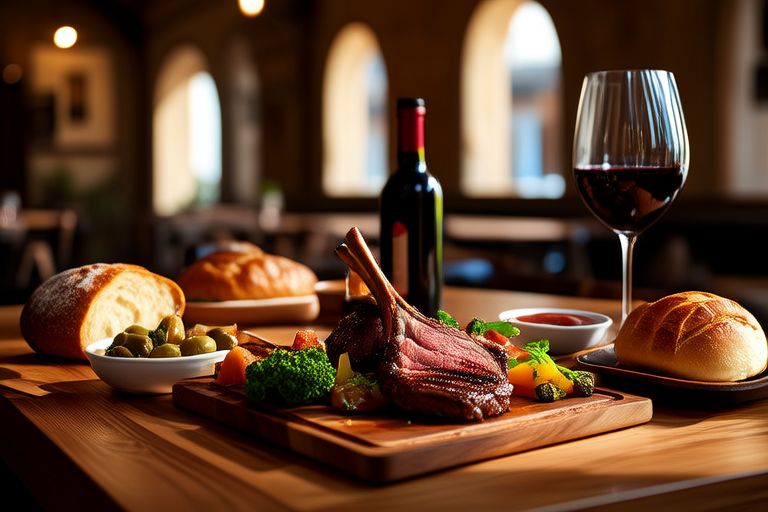Taste the Difference: How Travel Enriches Your Culinary Experience

“`html
Introduction
Traveling is more than just visiting new places; it’s about immersing yourself in different cultures, meeting new people, and experiencing the world through their eyes. One of the most profound ways to understand a place is through its food. Every region has its own unique culinary identity shaped by geography, history, and tradition. By tasting local cuisine, you gain insights into the values, beliefs, and way of life of the people who live there. Whether it’s savoring a freshly caught seafood dish on the coast or indulging in hearty mountain fare, each bite tells a story. Travel opens up a world of flavors that are often impossible to replicate at home, offering a sensory journey that deepens your appreciation for diversity.
Local Ingredients and Techniques
The heart of any cuisine lies in its ingredients and the methods used to prepare them. Different regions boast an array of produce, meats, and spices that are uniquely suited to their environments. For instance, coastal communities rely heavily on fresh seafood, while mountainous areas might focus on game and root vegetables. These ingredients are often harvested sustainably, ensuring they remain available for future generations. Traditional cooking techniques also play a crucial role in shaping the final product. In Japan, for example, sushi chefs take great care in selecting and preparing fish to ensure optimal freshness and flavor. Similarly, in Mexico, corn is ground into masa and used to make tortillas, tamales, and other staples. Seasonal eating is another important aspect of local cuisines. By consuming what is in season, you support sustainable practices and enjoy foods at their peak flavor. This approach not only benefits the environment but also enhances the dining experience.
Cultural Significance of Food
Food is much more than sustenance; it’s a vital part of cultural expression. Meals are often intertwined with traditions, celebrations, and daily life. In many cultures, specific dishes are prepared for holidays or religious observances. For example, during Christmas in Italy, families gather to share a feast featuring panettone, a sweet bread studded with raisins and candied fruits. In India, Diwali is marked by the preparation of sweets like laddu and barfi. Beyond festivals, everyday meals reflect the social fabric of a community. In some African countries, communal eating is common, with large portions shared among family members or guests. These practices foster bonding and strengthen ties within the group. Anecdotes and stories about food are passed down through generations, creating a rich tapestry of cultural heritage. By participating in these traditions, travelers gain a deeper understanding of the host country’s history and customs.
Gourmet Experiences vs. Street Food
When it comes to dining out while traveling, there are two main options: gourmet restaurants and street food stalls. Both offer unique experiences that cater to different preferences. Gourmet dining provides an opportunity to sample refined versions of local specialties prepared by skilled chefs. Michelin-starred establishments often push boundaries with innovative presentations and techniques, offering a memorable gastronomic adventure. On the other hand, street food offers a more casual and authentic experience. It allows you to interact directly with vendors, observe how dishes are made, and enjoy immediate gratification. Street food is particularly popular in Asia, where vendors sell everything from savory skewers to sweet treats. To find authentic local eateries, consider asking locals for recommendations or exploring less touristy neighborhoods. Avoiding tourist traps ensures you get a genuine taste of the area.
Learning New Cooking Skills
One of the most rewarding aspects of culinary travel is the chance to learn new cooking skills. Many destinations offer cooking classes where visitors can learn how to prepare traditional dishes under the guidance of expert instructors. These workshops provide hands-on experience and valuable insights into local culinary practices. Additionally, food tours allow participants to visit markets, farms, and artisanal producers, gaining firsthand knowledge of ingredient sourcing. Some tours even include demonstrations of traditional cooking techniques. Participating in such activities enriches your travel experience and equips you with practical skills you can apply at home. Bringing back recipes and techniques from your travels adds variety to your cooking repertoire and keeps memories alive long after returning home.
Conclusion
In summary, traveling enriches your culinary experience by exposing you to diverse flavors, ingredients, and cooking methods. Each bite offers a glimpse into the cultural context behind it, fostering cross-cultural understanding and appreciation. From local markets to gourmet restaurants, every meal tells a story worth savoring. Embrace the joy of discovery and let your taste buds guide you on this exciting journey. By incorporating culinary exploration into your travels, you enhance not only your palate but also your overall enjoyment of the destination. So pack your bags and set off on an unforgettable adventure where every dish promises to be a delightful surprise.
“`